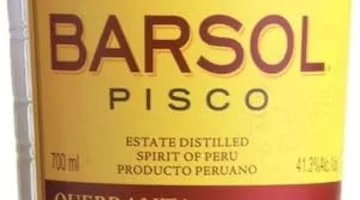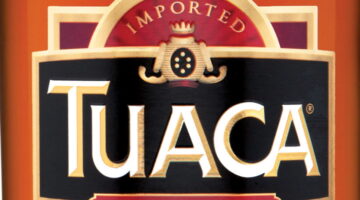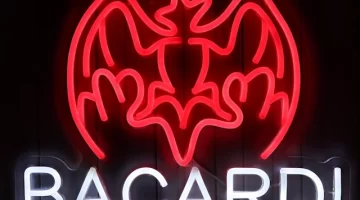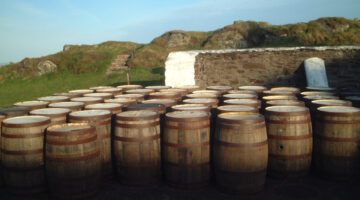A History of Johnnie Walker
Travel Distilled brings you a history of Johnnie Walker, the world-famous Scottish whisky brand with its striding man.
 Johnnie Walker, with its iconic striding man logo and color-coded labels, is arguably the most recognized Scotch whisky brand in the world. Its journey from a small grocer’s shop in Kilmarnock to a global icon is a testament to entrepreneurial spirit, innovative blending, and shrewd marketing. This is the history of Johnnie Walker.
Johnnie Walker, with its iconic striding man logo and color-coded labels, is arguably the most recognized Scotch whisky brand in the world. Its journey from a small grocer’s shop in Kilmarnock to a global icon is a testament to entrepreneurial spirit, innovative blending, and shrewd marketing. This is the history of Johnnie Walker.
From Grocer to Blender (1805-1857): The Foundation
The story begins with John Walker, born in 1805. In 1820, following his father’s death, the family farm was sold, and the proceeds were used to establish John’s own grocery shop in Kilmarnock, a bustling market town in Ayrshire, Scotland. In those days, grocers often sold single malt whiskies, each with its own distinct character and often inconsistent quality. John, with a keen business sense, began experimenting with blending these whiskies to create a more consistent and palatable product for his customers. This marked the humble beginnings of what would become a global whisky empire.
While John Walker laid the foundation, it was his son, Alexander Walker, who truly transformed the business. Upon inheriting the business in 1857, Alexander recognized the potential of whisky blending and dedicated himself to perfecting the art.
The Rise of Blending (1857-1889): Innovation and Expansion
 The mid-19th century saw significant developments that propelled the whisky industry forward. The 1860 Spirits Act legalized the blending of grain and malt whiskies, opening up new possibilities for creating smoother, more complex flavors. Alexander seized this opportunity, developing his own unique blends.
The mid-19th century saw significant developments that propelled the whisky industry forward. The 1860 Spirits Act legalized the blending of grain and malt whiskies, opening up new possibilities for creating smoother, more complex flavors. Alexander seized this opportunity, developing his own unique blends.
In 1865, Alexander created “Walker’s Old Highland Whisky,” the first blend to bear the Walker name. This marked a turning point, shifting the focus of the business from general grocery to whisky production. Recognizing the importance of branding and presentation, Alexander introduced the now-iconic square bottle in 1870. This innovative design not only allowed for more efficient packing and reduced breakages during transport but also made the bottle stand out on shelves. Another key element was the label, which was slanted at a 24-degree angle. This seemingly small detail made the label larger and more visible, further enhancing brand recognition.
Alexander also understood the importance of distribution. He established a network of agents and leveraged the expanding railway network and shipping routes to distribute his whisky throughout Scotland and beyond. By the time Alexander passed the business on to his sons, Alexander II and George, in 1889, whisky sales accounted for the vast majority of the company’s income, a stark contrast to the mere 8% under his father.
The Birth of an Icon (1889-1920): Branding and Global Reach
 The late 19th and early 20th centuries saw the Johnnie Walker brand truly come into its own. Alexander II and George Walker possessed a strong marketing acumen and further solidified the brand’s identity. In 1908, they commissioned renowned cartoonist Tom Browne to create a logo. The result was the “Striding Man,” a figure embodying progress, forward-thinking, and a spirit of adventure. This iconic image, initially a caricature of John Walker, has become synonymous with the brand and remains a powerful symbol to this day.
The late 19th and early 20th centuries saw the Johnnie Walker brand truly come into its own. Alexander II and George Walker possessed a strong marketing acumen and further solidified the brand’s identity. In 1908, they commissioned renowned cartoonist Tom Browne to create a logo. The result was the “Striding Man,” a figure embodying progress, forward-thinking, and a spirit of adventure. This iconic image, initially a caricature of John Walker, has become synonymous with the brand and remains a powerful symbol to this day.
In 1909, the company officially adopted the “Johnnie Walker” name and restructured its range of whiskies, naming them after the colors of their labels: Johnnie Walker Red Label and Johnnie Walker Black Label were born. Red Label, a vibrant and spicy blend, was aimed at a wider audience, while Black Label, a richer and more complex blend aged for 12 years, catered to more discerning palates.
This period also saw significant international expansion. By 1920, Johnnie Walker was being sold in 120 countries, becoming a truly global brand. This widespread availability cemented its place in popular culture, with mentions in songs, films, and literature.
Consolidation and Continued Growth (1920-Present): A Global Giant
In 1925, John Walker & Sons was acquired by Distillers Company Ltd (DCL), which later became part of Diageo, the world’s largest spirits company. Under Diageo’s ownership, Johnnie Walker continued to flourish, benefiting from increased resources and global distribution networks.
Throughout the 20th and into the 21st century, Johnnie Walker has continued to innovate, introducing new expressions like Green Label, Gold Label Reserve, and Blue Label, each with its own unique character and target audience. The brand has also invested heavily in marketing and advertising, with memorable campaigns like “Keep Walking,” which reinforces the brand’s message of progress and ambition.
The History of Johnnie Walker to Today
 Today, Johnnie Walker is a global icon, sold in almost every country in the world. It is a symbol of quality, heritage, and forward-thinking spirit. From the humble beginnings of a Kilmarnock grocer’s shop, Johnnie Walker has become a testament to the power of vision, innovation, and unwavering dedication to quality. The Striding Man continues to walk, symbolizing the brand’s ongoing journey and its enduring appeal to whisky lovers around the world.
Today, Johnnie Walker is a global icon, sold in almost every country in the world. It is a symbol of quality, heritage, and forward-thinking spirit. From the humble beginnings of a Kilmarnock grocer’s shop, Johnnie Walker has become a testament to the power of vision, innovation, and unwavering dedication to quality. The Striding Man continues to walk, symbolizing the brand’s ongoing journey and its enduring appeal to whisky lovers around the world.











